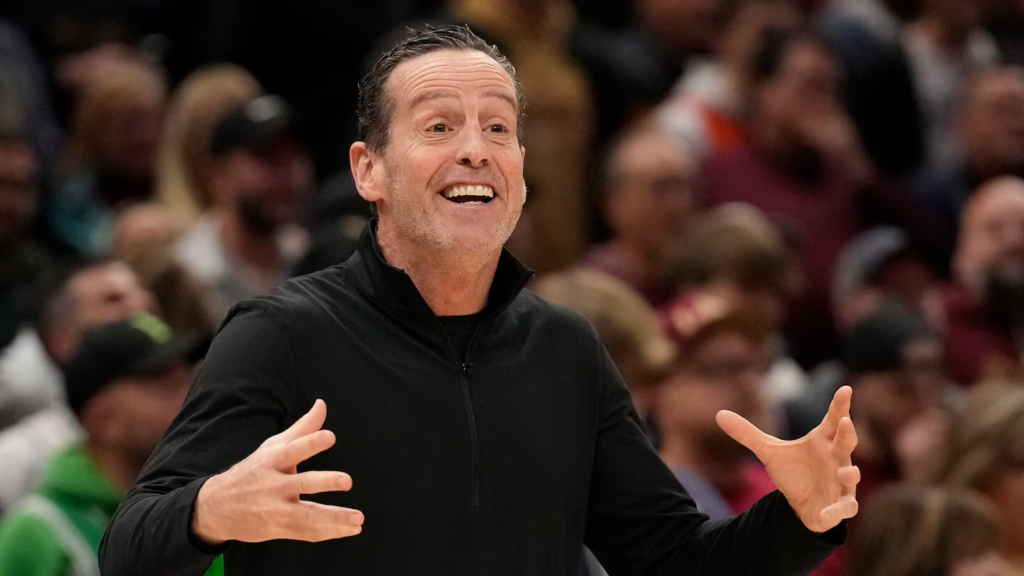
What Really Decided the Game? Late-Game Strategy, Silent Injuries, and a Crucial Timeout That Never Came
In a game packed with highlight plays and momentum swings, the real story of the Lakers vs Pacers showdown wasn’t just the final score—it was the nuanced coaching decisions and under-the-radar injury concerns that quietly shaped the outcome. As fans dissect the buzzer-beater moments, two questions remain: Why didn’t the Pacers call timeout in the closing seconds? And did player health, particularly Tyrese Haliburton’s ongoing injury issues or LeBron’s visible discomfort post-game, influence what we saw down the stretch?
No Timeout, No Problem? Not Quite for Indiana
With under 15 seconds left and trailing by two, the Pacers had a golden opportunity to draw up a play. But Rick Carlisle opted to let it play out—no timeout, no reset, just live basketball. It’s a decision that will be debated all week, and while there’s logic behind trusting your players in transition, especially with a creative force like Haliburton, it may have backfired here.
Indiana’s final possession looked rushed and uncoordinated. The Lakers’ defense had time to set up, and without a designed play, Haliburton was forced into a contested three that clanked off the rim. In retrospect, a timeout could’ve allowed the Pacers to exploit mismatches or get a cleaner look. But was Carlisle’s hesitation rooted in strategy—or was it about Haliburton’s health?
Haliburton’s Health: A Quiet Variable with Loud Consequences

Here’s where things get interesting. Haliburton, who has dealt with lingering hamstring issues throughout the 2024–2025 season, didn’t look quite right in the fourth quarter. His burst was limited, and he passed up a few driving lanes he normally attacks without hesitation. While there was no formal mention in the NBA injury updates, it was clear something was off.
Coaches don’t just manage plays—they manage people. If Carlisle sensed Haliburton wasn’t at 100%, that could’ve influenced the no-timeout call. Maybe he didn’t trust his star guard to execute a drawn-up play against a set defense. Maybe he thought an improvised transition would be the better gamble. Either way, health concerns likely played a bigger role than fans realize.
Lakers’ Late-Game Poise: Quiet Masterclass from the Sideline
On the other side, the Lakers showed poise that only comes from experience—and maybe a little wear-and-tear wisdom. Head coach Darvin Ham made a subtle but effective shift by inserting an extra perimeter defender in crunch time, anticipating the Pacers’ reliance on the three-ball. That one move disrupted Indiana’s spacing just enough to force awkward decisions.
Even more telling? LeBron James, though still productive, was clearly managing discomfort. Cameras caught him icing his knee immediately after the game—a not-so-subtle hint that the minutes are taking a toll. It’s possible Ham adjusted his closing lineup to limit LeBron’s defensive workload, using him more as a roamer and floor general than a lockdown wing. It worked—and shows the kind of tactical flexibility that often separates good coaching from great.
The Takeaway: Games Aren’t Won in Highlights, They’re Lost in the Details
While the box score tells one story, the Lakers vs Pacers coaching decisions, subtle injury clues, and late-game strategies told another. This wasn’t just a game—it was a chess match shaped by real-time reads, long-term player health concerns, and split-second decisions.
As the season grinds on, keep an eye on the small stuff: the untaken timeout, the post-game ice packs, the substitution patterns that don’t always make the highlight reels. That’s where the real NBA drama lives.